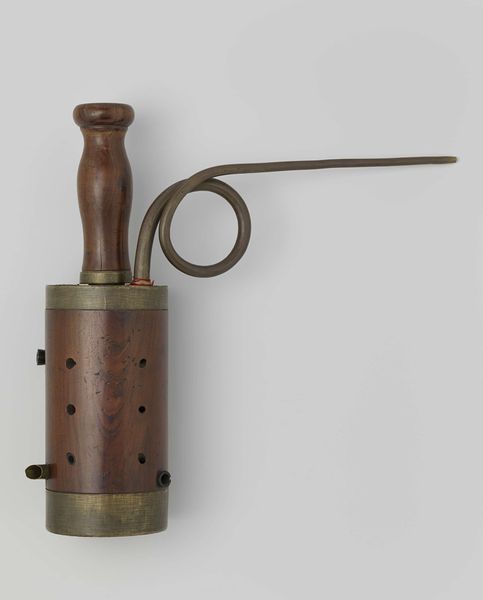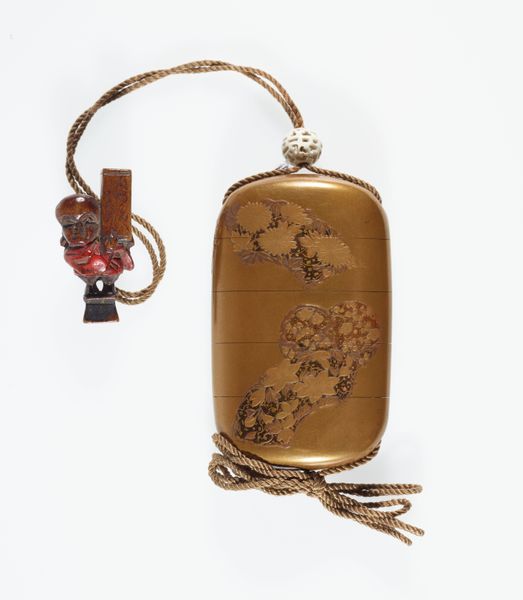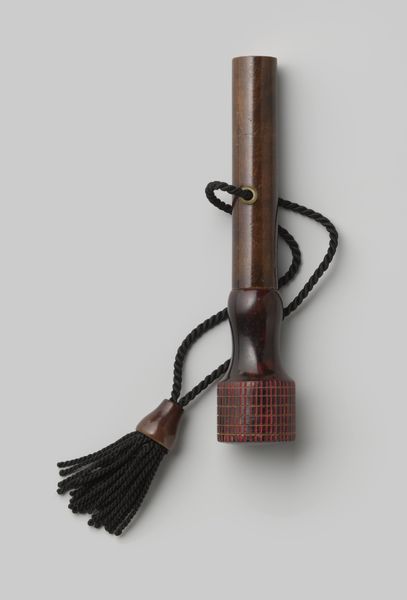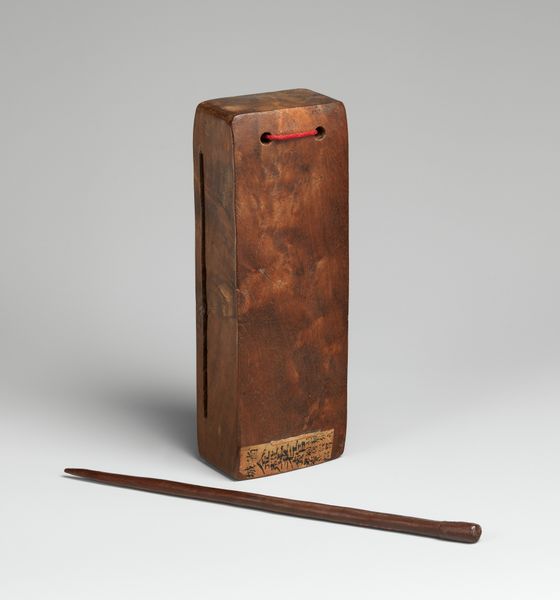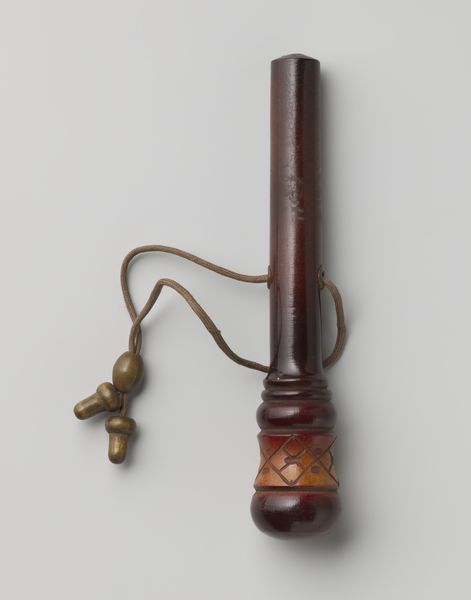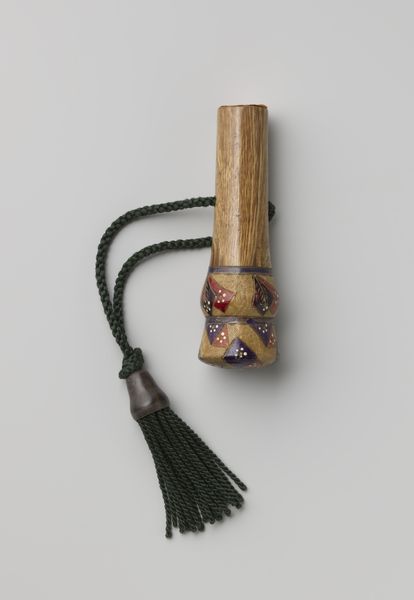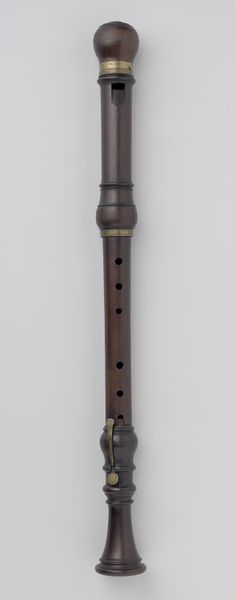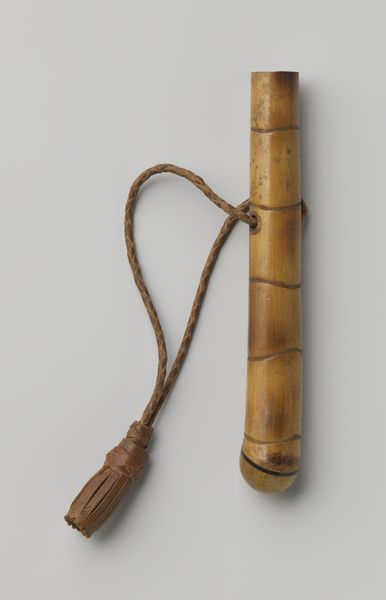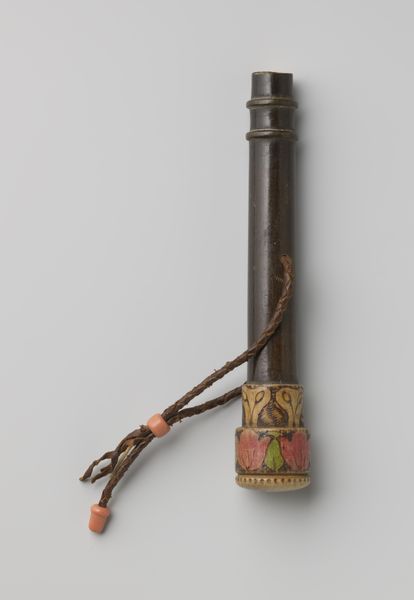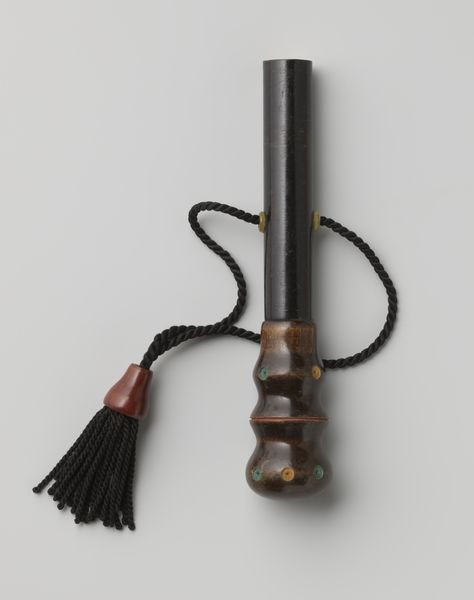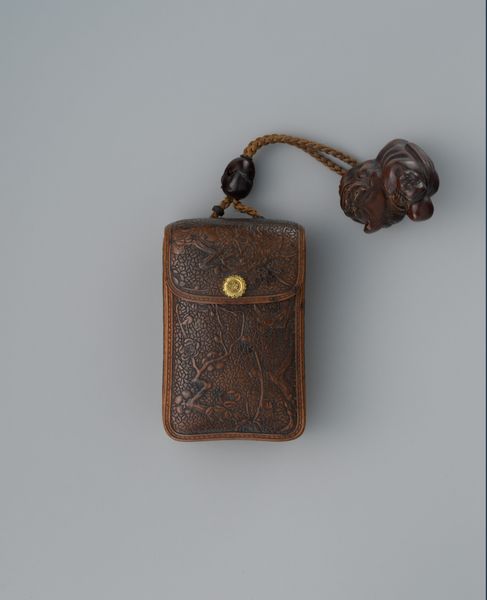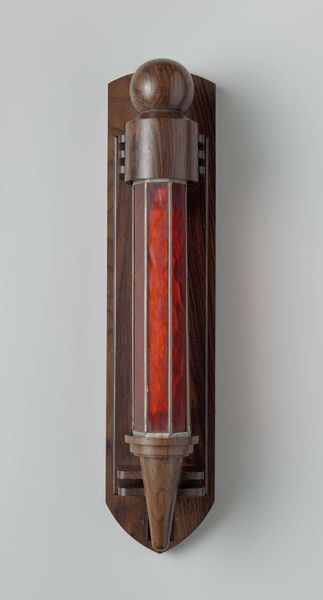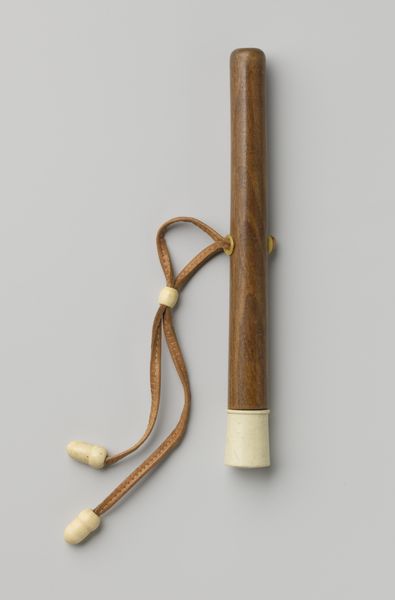
Konische parasolknop of parapluknop van bruingevlekt hoorn met groeven en reliëfbanden c. 1920
0:00
0:00
wood
#
product photograph merchandise
#
product shot
#
3d printed part
#
product fashion photography
#
round design
#
product design photgrpaphy
#
3d shape
#
geometric
#
metallic object render
#
product mock up
#
wood
#
product photography
#
decorative-art
Dimensions: length 15 cm, diameter 4 cm
Copyright: Rijks Museum: Open Domain
Editor: Here we have a parasol or umbrella knob, crafted around 1920 by Gustav Schnitzler. The museum tells us it's made of brown-flecked horn. It strikes me as an everyday object elevated through careful material selection and detailed craftsmanship. What do you make of it? Curator: The choice of horn is quite interesting. It points to a very specific mode of production tied to the animal. Its accessibility as a material also collapses the divide between the ready-made and the bespoke. Consider how the tooling of this horn -- those grooves and relief bands -- transforms something utilitarian into an object of decorative art. Who had access to this? Editor: That's a good question! It makes me think about the market for luxury goods at the time. Curator: Exactly! And not just luxury, but consider the specific class aspirations being articulated through the use of "natural" materials shaped in an almost industrial fashion. We see the craftsman responding to and, perhaps, competing with industrialized forms. It wasn’t just about keeping the rain off; it's about subtly displaying one's position in the social fabric. Editor: So, it's the horn itself and the labor that transforms it, which speaks volumes? Curator: Precisely. It reflects a particular relationship to both nature and industry, doesn't it? It makes us consider what other kinds of materials were accessible to craftspeople and in what locations and settings these existed. Editor: It definitely adds a layer of meaning I hadn’t considered at first glance. I'll look at everyday objects differently from now on. Curator: Yes, materiality can always guide you toward understanding deeper contexts of labor and cultural values of this period.
Comments
No comments
Be the first to comment and join the conversation on the ultimate creative platform.
